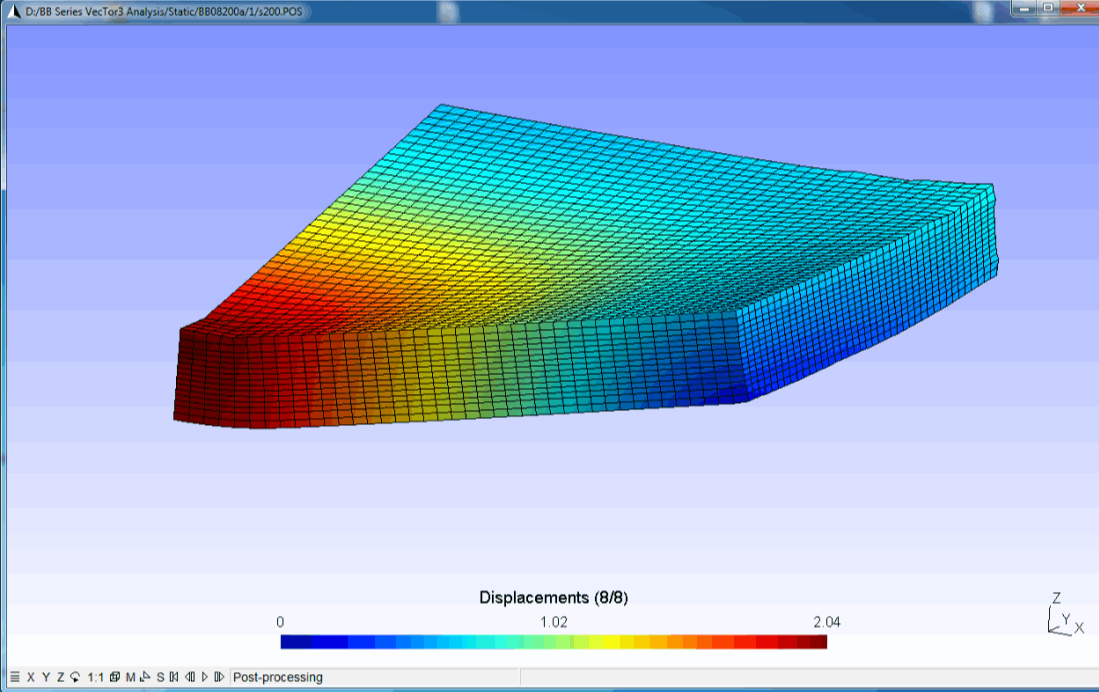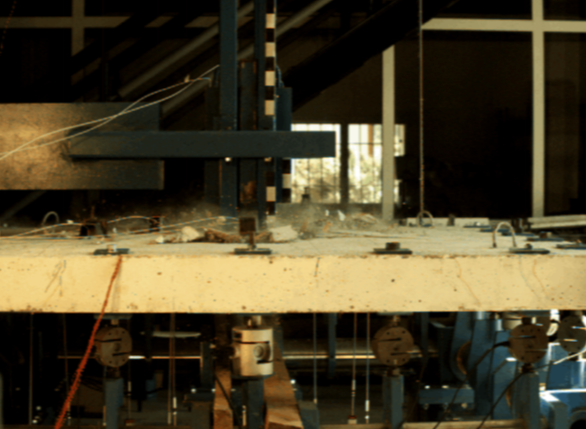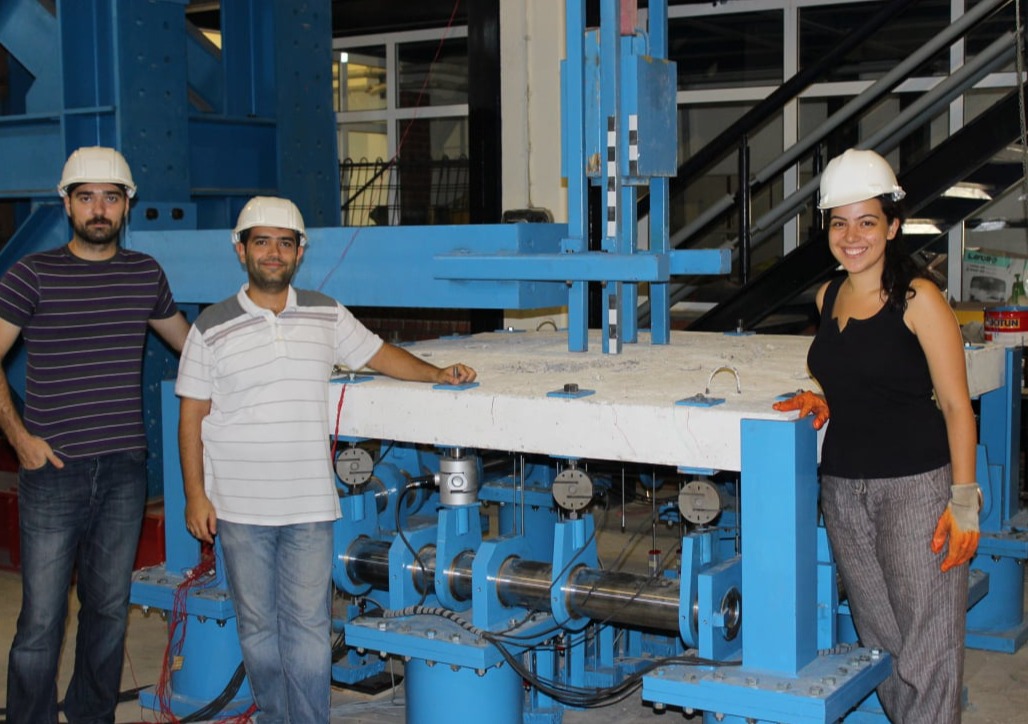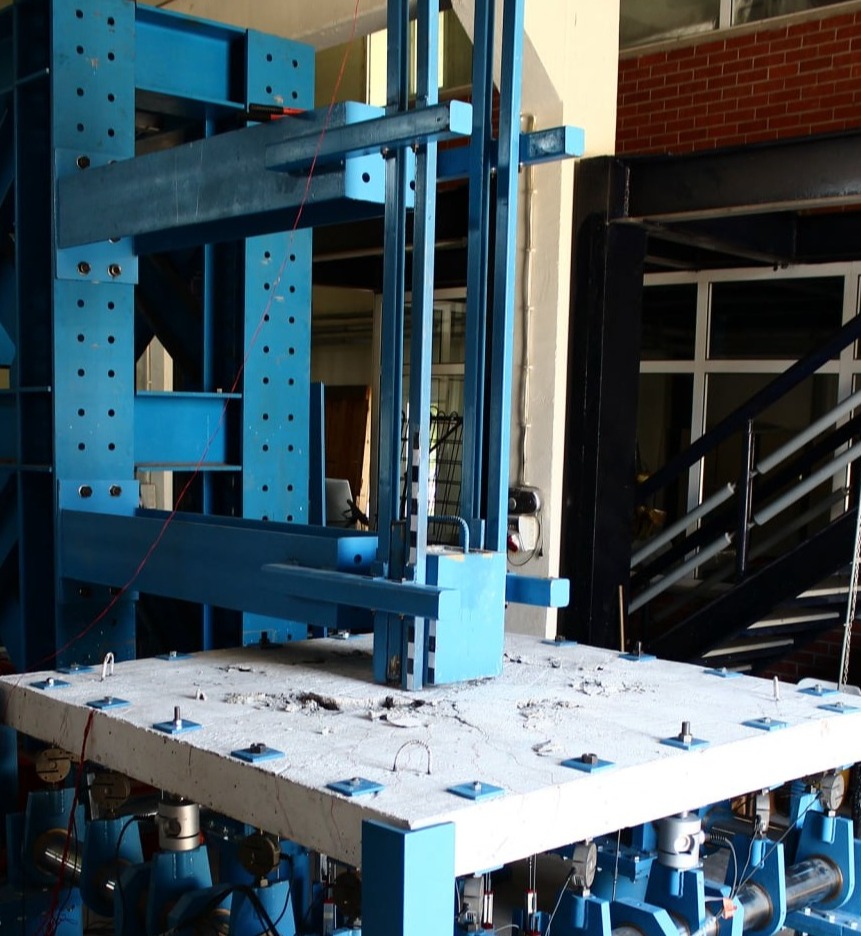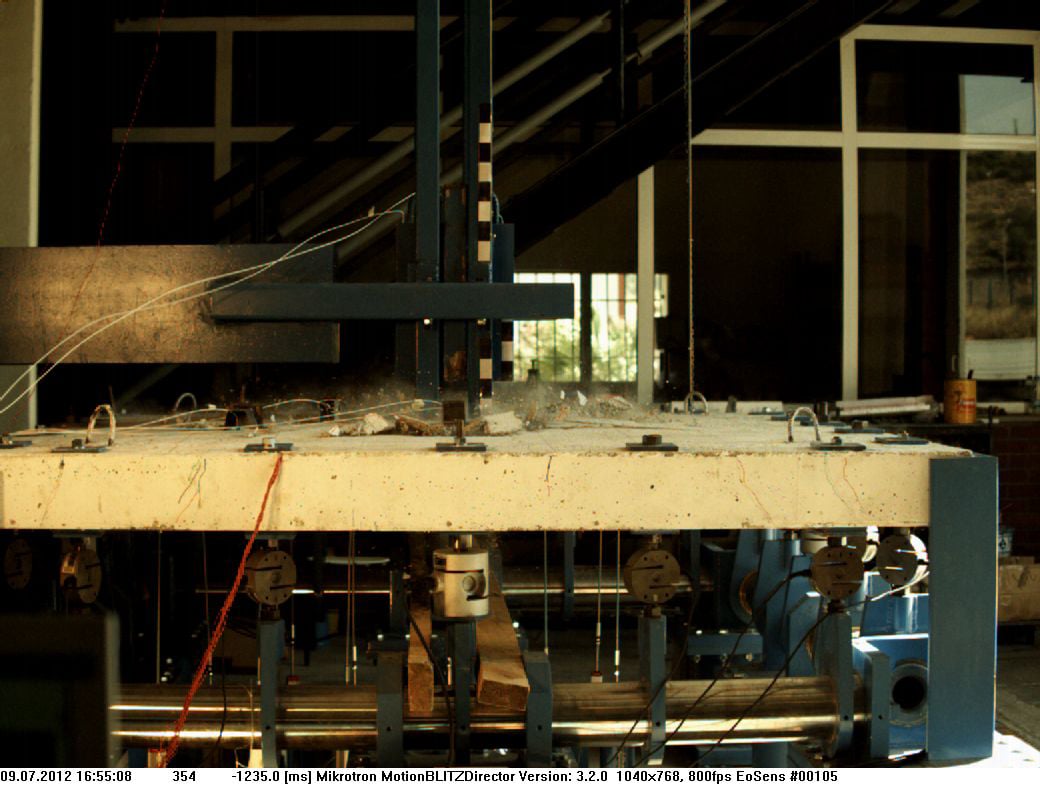Summary
Reinforced concrete (RC) structures may be subjected to impact forces due to various reasons, including accidents in industrial facilities, vehicle collisions, rock falls, and military and terrorist actions. As a result, analysis and design of RC structures subjected to impact loads have long been an area of interest for researchers. However, because of the major difficulties involved in modeling the behavior of RC structures in high dynamic conditions, currently there exists no general, commonly-accepted analytical analysis and design methodology for such structures against impact loads. One particular challenging aspect stems from the increased shear-dominant behavior of reinforced concrete members under impact loads, since modeling the shear behavior of RC has long been problematic.
The project RCImpact aims to expand our knowledge on the impact behavior of RC structures and develop and verify a three-dimensional nonlinear finite element analysis (NLFEA) software that can effectively be utilized in the impact analysis and design of RC structures. To achieve this objective, an NLFEA software, VecTor3, have been developed which employs high level, state-of-the-art reinforced concrete modelling techniques, such as the Modified Compression Field Theory (MCFT, Vecchio and Collins, 1986) and the Disturbed Stress Field Model (DSFM, Vecchio, 2000). A well-instrumented experimental program was also conducted on RC slab specimens investigating the effective mechanisms involved in RC structures when subjected to impact loads. The study focused on impacts that do not induce significant local damage, allowing the dissipation of impact energy through global mechanisms.
Development of the NLFEA software constituted the first phase of the project. Software development involved major modifications to an existing reinforced concrete analysis program VecTor3. VecTor3 is a three-dimensional NLFEA software, originally developed at the University of Toronto, employing DSFM as its main computational methodology. The program was capable of analyzing RC structures under static loads. As a part of this project, VecTor3 was modified for the consideration of dynamic loads including impacts. The program was tested through the modeling of impact tests conducted on RC beams available in the literature and successful corroboration of the computed results with the experimental results was achieved.
Second phase of the project involved impact testing of reinforced concrete slabs. Six RC slabs with dimensions 2150x2015x150 mm were tested at the Structural Laboratory of the Izmir Institute of Technology. To facilitate a comparison between the static and impact behavior of identical specimens, the slabs were cast in three identical pairs, such that one of the specimens would be tested under impact loads whereas its identical twin would be tested under static loads. Hence, three types of slabs with identical geometry but varying reinforcement details were tested, which included orthogonal meshes at the top and bottom of the slab manufactured with 8 mm diameter bars of spacings 100, 150, and 200 mm. Concrete for all specimens were cast at the same time using the same batch, so all specimens had identical concrete properties.
To test the slabs under simply supported conditions, an innovative impact test setup was designed and manufactured, supporting the specimens at 20 locations along the perimeter and holding the specimens in place during the impact induced rebound. This setup was also used for the testing of the specimens under monotonically increasing static loads at the midpoint. Impact loads were induced on the specimens by a free falling drop-weight, impacting the specimens at the midpoint. The specimens were intensely instrumented with 20 load cells at each support location, 24 displacement transducers, 7 accelerometers and 12 strain gauges fixed to the reinforcing bars. Dynamic data was captured with the help of a high speed data acquisition system, capturing and recording the data at a rate of 250 kHz per channel. In addition to the sensors connected on the specimen, in impact tests, a high-speed camera was used to observe the deformations of the specimen and to measure the contact velocity of the drop-weight. The camera captured images of the test setup at a 500 frames/second rate at 1 MP resolution.
At the end of static tests, the specimen with the highest reinforcement ratio carried the highest load, but showed little ductility. Other specimens with lesser reinforcement ratios carried lesser amount of load, but they were able to sustain the load with increasing displacements. Nevertheless, all statically tested specimens failed at the end by punching, although they developed flexural cracks as well. At the loading surface, the circular loading plate has punched suddenly, creating a punching cone visible from the other side as the circular wide cracks around the center.
In impact tests, the impact load was applied by means of the free fall of a drop-weight from 2.50 m height, resulting in 7 m/s contact velocity at the moment of impact. The drop-weight, 180 kg in weight, slid between rails with minimum contact and impacted the specimens at the mid-point. The drop-weight had a steel circular flat bottom of 200 mm in diameter, identical to the one used in static tests. Punching was also observed in these impact test, with little sign of flexural cracks. These tests proved that although the specimens showed high degree of flexural damage in static tests, due to the involvement of inertia forces, shear failure is the dominant failure mechanism in impact loads. This observation stresses the importance of the accuracy of the shear behavior models to be used in modeling the impact behavior. Thus, sophisticated shear behavior models of VecTor3, such as DSFM, is justified in NLFEA modeling. Both static and impact test results were modeled with VecTor3 with significant success.
In this project, with the help of the extensive experimental program conducted and the NLFEA software developed, behavior of reinforced concrete members under impact loads were investigated. A comprehensive analysis of test and NLFEA analysis results will further yield a solid understanding about the mechanisms involved, thus contributing to the development of a design methodology for RC structures to resist impact loads. Moreover, the literature was supplied with extensive high quality impact test data, which can be used by researchers working in the area as a benchmark.
